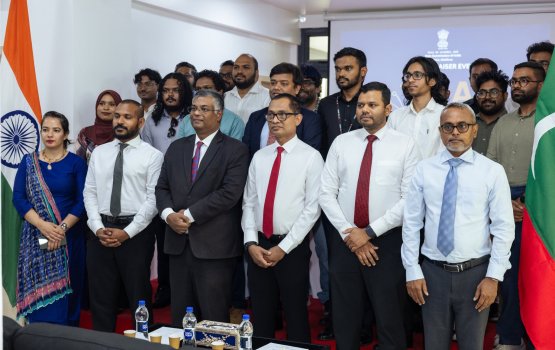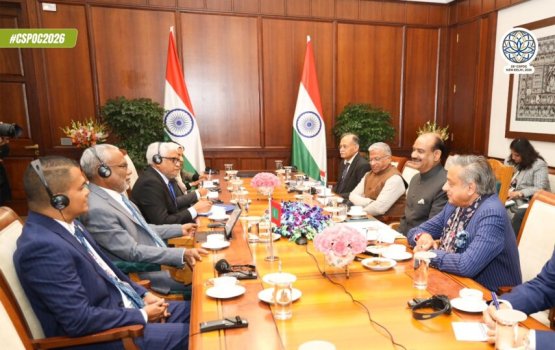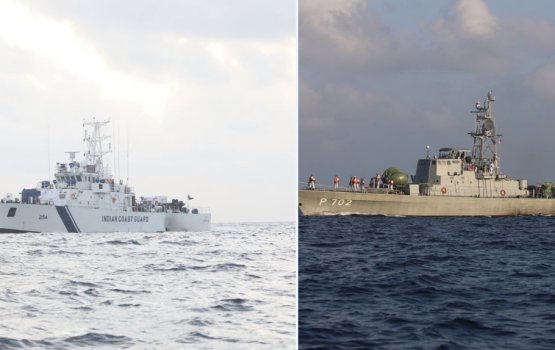Often referred to as Indian Ocean’s Garland of Pearls, the Maldives has a landmass not more than 115 miles under its independent territory. A good chunk of the 400,000 inhabitants are now settled in the Capital, Male’ City.
The Capital and its adjoining greater Male’ area which comprises no more than a total of 10 kilometers has a population of 150000 Maldivians in addition to the over exceeding proportions of expatriate workers already settled in. The city streets are bustling from dusk to dawn and from dawn to dusk like a vicious cycle. By now, have the picture of visiting tourists, island hopping on the main streets and busiest areas of the city as well.
Should we face no obstacles of spontaneous hurdles, a person in the city was once able to walk its cross-section in not more than 30 minutes. However, now, one can only dream. The entire landmass is cramped with concrete buildings, even on the narrower streets which would not be more than 10 feet breadth-wise. The high-rising buildings provided more space for new-settlers, which means more vehicles. Especially, with the absence of a public transportation system within the city labeled the status of congestion from bad to worse.
The one and only system close enough to a public transportation system in the city is the taxi service provided by private companies who allow private drivers to join the business. However, it’ll be nothing but impossible to find a city dweller who trusts this so called taxi service. On top of the extremely high taxi fares, almost no one can hire a cab like we did a decade and a half or so years back. Then came the novel taxi smart-applications, which again give the bonus to the drivers. Hey despite several attempts to place an order, the drivers opt not to respond if the drop-off location is within the Capital Male’ boundaries. In addition to this, most taxis hide in their magical garages with the sight of slightest rain.
With the failed taxi transport system, more and more people are now opting the self-sufficient option of riding their own bikes. Each and every household now owns 3-4 bikes, while they lack no space for the tip of a pen to make a mark. This brings the second most contributing factor to the congestion. Lack of private parking and abundance freedom to bring in more private vehicles has led all of it to end-up on the streets. The driving and the parked ones have no place else for shelter. This does not make transportation easy either. Often, the bikers are almost walking while on their bikes.
Solution: Fare-free public transport
There is a simple solution for all these complaints. It is the establishment and cost efficient management of an effective public transportation system. By cost efficient and effective is stated here to give the meaning of a fee-free public transport system. This can be an area of a lengthy debate. However, let us try to sum-it up short.
Would reduce the number of vehicles on the road:
Global warming is a serious issue almost each every Maldivian once spoke about during their lifetime, and if public transport was free, more people would use it, taking the bikes, cars and other means of private or semi-private vehicles.
A single mini-bus could carry an average of 15 passengers at a time. This could at least remove 15 private bikes off the road. Now imaging an effective system with a reasonable number of min-buses free of charge?
Government’s job is to provide services:
This would be a great service that could be used by everyone. Taxes already pay for health care, schools and roads etc. so why not let taxpayers, who is almost everyone in this country, see the benefits for themselves, in a useful service everyone can use.
Would need more public transport workers:
With increased and better public transport, we would need more bus drivers, of course, creating more jobs. This is great with the financial crisis almost every household is over burdened with at the moment. It would make it easier for people to get to their job – they could just get on a bus.
Public transport companies need more customers:
Most public transport organisations offer friendly and reliable service and could do with some more “customers”, especially if they want to avoid a loss their reputation. To attain this goal each company will be laid with the responsibility to provide a quality public service. With this, the community would be happy to take them and it would get the annoying vehicles off the road.
Zero fare maximizes efficiency, convenience and attractiveness:
If free public transport was offered to everyone, of course they would use it. Yes, some people may stick to their private vehicle, but the majority would think it was a great idea. If you had the choice of paying thousands each year to run your private vehicle, or to get on a bus every morning for free, what would you choose? At least no hustle in paying the overdue vehicle fees and hey, don’t forget the parking tickets.
For a lot of people, the only reason they don’t catch public transport is because it costs too much. If it was free, they’d definitely start using it.
The Option of School Bus
The school bus services were once practiced in several parts of the country. Even in the Capital itself.
An efficient school bus system with ensured safety measures would definitely take quite a number of private and semi-private vehicles off the road.
Most of the parents now, opt to have their own vehicle to transfer their offspring back and forth from school to home and from home to private tuitions and so on. For some working parents, the trip doubles of triples. Though not every parent is in the so called clock in clock out jobs, there are number of single parents, work from home parents and also ones who take up both the tasks. Now, wouldn’t a school bus system be a social welfare scheme too?
Likewise, office or profession wise fare-free public transport service could be set up. This would of course make the employees more responsible, at least in the area of punctuality.
Do we have future in fee-free public transport system?
There is one important fact to keep in mind. By no means are we debating to set up a public transport pick-up and a drop-off point right at every house’s doorstep. Lucky if it happens though.
Walking a block or couple to reach the bus would do you better than harm. This system should consider easy accessibility to those with physical disabilities. All future systems should be set up with an inclusive society in the framework.
Like aforesaid, the debate could go on for hours. Or may be days, when it comes to policy and months in decision making. But, think about this. Could the great-grand parents or their parents thought about the benefits of free healthcare, or Aasandha which we are making use of now? In this regard, couldn’t a fare-free public transport system flourish on this garland of pearls?








